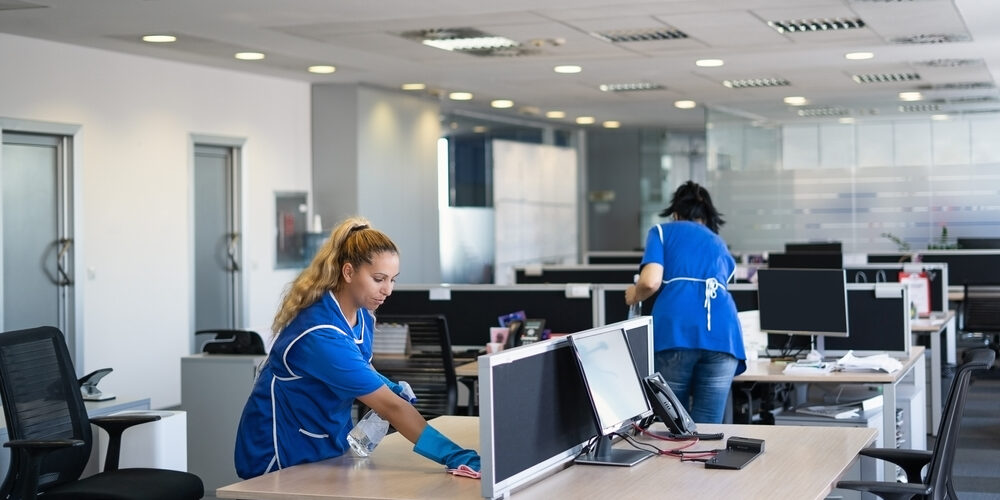Blog: Controlling Cleaning’s Labor Costs

John Goetz, Global Product Manager, Hydro Systems
Labor is often the highest cost for organizations such as restaurants, hotels and building service contractors that uphold cleanliness in commercial facilities. Securing new talent, educating employees to perform their jobs effectively and managing high turnover rates are among some of the most common labor challenges. In other words, labor can truly make or break a company’s bottom line and long-term success.
As a result of the COVID-19 pandemic, many organizations were forced to shift the way they approached cleaning and disinfecting. Chemicals were in high demand. New procedures and equipment were implemented. The strong focus on protecting public health and safety meant that many businesses were spending much more on cleaning than they ever had before.
So how can organizations effectively control the labor costs associated with cleaning? Read on to uncover tips for an effective and cost-efficient cleaning program.
Cost-saving Strategies
Your operation can realize labor-related savings by implementing several best practices, including:
Conduct training – Training is essential for ensuring that employees know how to effectively clean and disinfect. This has numerous cost-saving benefits. First and foremost, training and proper application reduce the risk that accidents will occur. Safety mishaps in the workplace can result in time away from work, increased workers’ compensation claims and other issues that drive up the cost of doing business.
Secondly, training teaches employees the pitfalls of overcleaning and undercleaning. Overcleaning leads to higher consumption of chemical, water, energy and more, which has a direct impact on the bottom line. Undercleaning can leave pathogens present on surfaces, which in turn can lead to an outbreak that impacts workers, customers and your organization’s reputation. For these reasons, training is the most important tactic for managing labor and its impact on the cleaning process.
Utilizing equipment that is naturally intuitive minimizes training and simplifies the process of cleaning and sanitizing.
Implement new practices – Smart business owners and managers understand that while implementing the right practices may require an upfront investment, it can also yield long-term cost savings and support staff. This is especially true for cleaning programs. Equipment like chemical dispensers can simplify the process of mixing chemicals and water, and reliable and accurate systems ensure consistency with every dose. There are even portable dispensers, foamers and sprayers that can help employees clean more quickly without sacrificing results. Easy-to-use and easy-to-maintain equipment like these can transform the way that staff approach cleaning, making it more efficient and thereby reducing labor-related costs.
Automate specific cleaning tasks – In some cases, there are tasks that can be automated so that employees can focus on higher priority activities. For example, in foodservice environments, dishwashing machines perform warewashing so that dishes, glassware and utensils don’t have to be washed by hand. Not only is manual dishwashing labor intensive, but it ends up wasting more resources like water and chemical. To make the most of your machine’s efforts, be sure to install a smart chemical dispenser that accurately doses solid or liquid detergents, rinse aid or sanitizer. Consider other ways to automate cleaning, like introducing robotic floor care machines to manage this time-consuming yet necessary task.
It is also common for sites to manually collect and report data like load counts, rack counts or cleaning schedules using paper logs. Investing in a dispensing system that generates this reporting automatically through a secure Internet of Things (IoT) platform can lead to faster decision making and better productivity.
Protecting People and Profit
Cleaning will continue to be an important focus for organizations moving forward. Not only does proper cleaning and disinfecting help reduce the spread of pathogens, but it also gives customers and employees reassurance that a business is prioritizing their health and safety. The pandemic has resulted in many key learnings around cleaning. Today, we’re more enlightened on how to clean and how not to clean. By following the above strategies, organizations can create a cleaning program that considers people and profit to avoid the pitfalls that can lead to wasted time and poor results.

Customer Service and Technical Support
Call 1-800-543-7184 Monday-Friday 8am - 5pm EST











